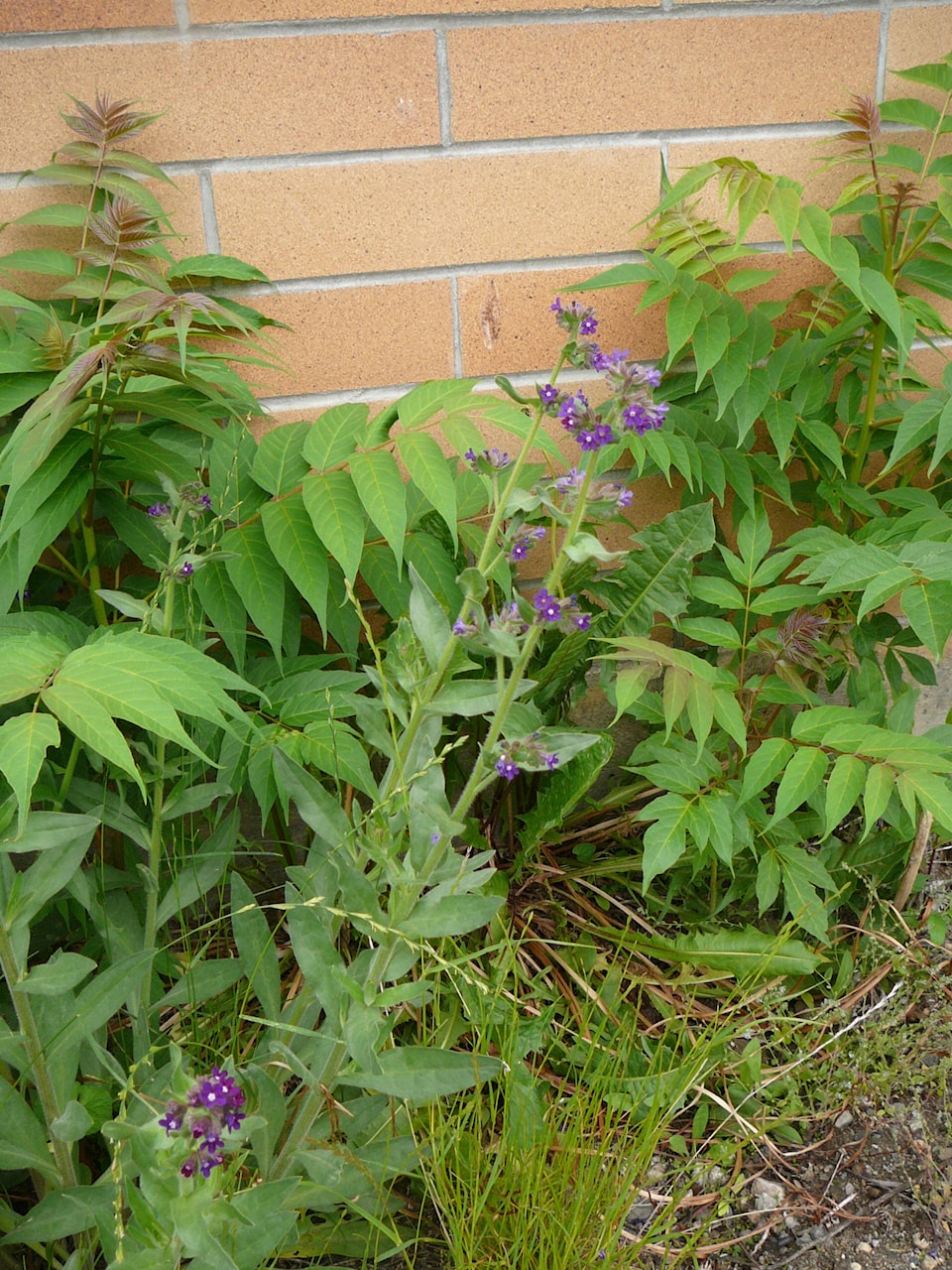By Gwen Steele
One of the biggest causes of escalating landscape maintenance tasks is the failure to remove weeds before they set seed or establish extensive root systems.
On Saturday I discovered an infestation of Blueweed on the edge of a downtown gravelled parking lot. Like many noxious weeds, they thrive in dry conditions and populate disturbed soil.
Blueweed (Echium vulgare) is about two feet high and of variable width. Masses of small brilliant blue flowers are followed by up to 2,000 burr-like seeds. They spread easily by sticking to clothes and animal fur. It has the same invasive potential as knapweed so we all need to act now to eradicate it in our area.
The plant looks nice, so is not recognized as a weed until it comes up everywhere the next year.
Do not put noxious weeds in your green waste bin. Put them into your garbage bin to be buried in the landfill.
For more information and pictures of local invasive weeds search: and .
In the past, two species of large shade trees have been used extensively for their fast growth.
Both are now considered invasive in many parts of North America.
Late in May, Siberian Elms (Ulmus pumila) ‘snow’ their millions of white dime-sized discs of seeds all over the valley. The trees can be seen in the small park to the west of the road into Knox Mountain Park.
This month, Tree of Heaven (Ailanthus altissima) will be topped with a froth of orange/yellow flowers. From late summer to next spring they each shed millions of seeds. The trees look a bit like Sumac or Walnut but are easily identified by rubbing leaves or bark – both stink, hence the common name, Stink Tree.
Very bad infestations of Tree of Heaven can be found on the west face of Knox Mountain in Poplar Point, along the hike to Paul’s Tomb, and throughout Okanagan Centre. Seeds of both these species are blown everywhere. Because they are tough and need little water they grow almost anywhere.
They are often found growing in cracks in sidewalks and against foundations where they are hard to remove. Both are invading the wild, out-competing native species. With their fast growth and massive root systems, these two species are a weeding nightmare.
Unless they are noticed and removed when very small they are hard to dig out, especially when they have hidden inside hedges or grown up through other plants. Search on Google images to identify their seedlings.
Although not invasive in the wild, in irrigated landscapes Maple trees produce many seedlings. These are also difficult to remove when allowed to grow past seedling size.
As with all deciduous trees (ones that drop their leaves in fall), unless all roots are removed, they will continue to grow even when cut down.
Gwen Steele is executive-director of the non-profit Okanagan Xeriscape Association. Learn more about Gardening with Nature and plants for the Okanagan on the website at: www.okanaganxeriscape.org



